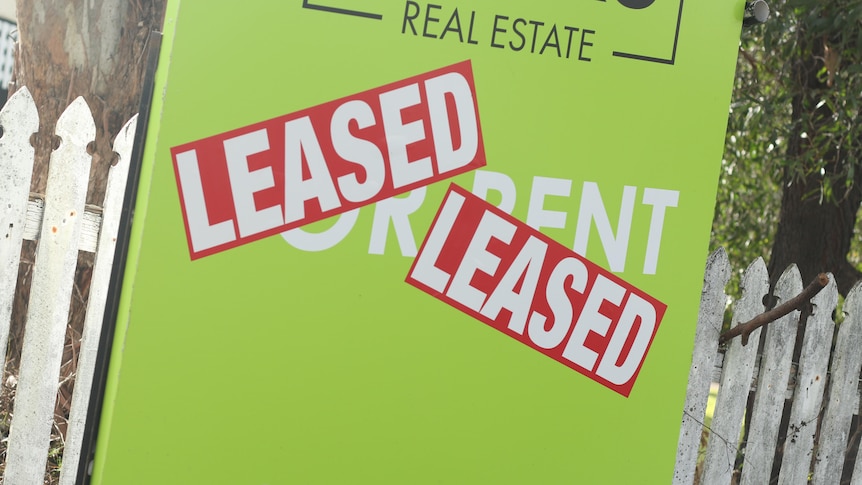Leading housing experts have called for a major overhaul of the government’s rent assistance program, describing the payments to low-income households as “inadequate” while rental costs continue to skyrocket.
Key points:
- Michael Fotheringham from the Australian Housing and Urban Research Institute says government rental assistance is not appropriately targeted
- Andrea Ferris says her rental assistance “barely covers milk and bread”
- Maggie Shambrook started a support group for older women who rent
An analysis of the scheme by the Australian Housing and Urban Research Institute (AHURI) also found households which were not in rental stress were still receiving payments, while people living in hugely expensive areas were not getting enough.
AHURI managing director Michael Fotheringham said the key issue with the government’s rental assistance was that the payments rose with overall inflation and were not directly linked to rising rental costs or geographic rental trends.
“One of the challenges is that it is not targeted to renters in any way,” Mr Fotheringham said.
“Someone in inner-Sydney has the same amount [of support] as someone in Hobart or Perth.”
His analysis of the system found that the new government could save money if it targeted low-income households in areas where rents had risen significantly.
“Some of the households receiving it are not in rental stress. They are relatively low income but paying relatively low rent as well,” he said.
‘I had nowhere else to go’
Single mother Andrea Ferris said rent assistance “barely covers milk and bread” for the week and she was barely able to survive as rents increased.
Rents in Ms Ferris’s hometown, the Gold Coast, have increased 21 per cent in the past year.
With vacancies across the country at record lows, she was forced to settle for a three-bedroom house well out of her budget.
“I had nowhere else to go. It was looking pretty scary, I was looking at moving into a friend’s room with the kids,” she said.
“We came three weeks from homelessness.
“I don’t buy fruit and vegetables. The doctor said my iron is low and asked me if I eat red meat and I said, ‘I don’t. I can’t afford it.'”
She said the government rent assistance had barely changed in a year despite her paying at least $100 more a week in rent.
“It’s $47 a fortnight for $570 a week. It doesn’t even cover our milk and bread for the week. it’s ridiculous.
“You can’t expect the rental market to go up and expect everyone to cover that.
“[with] the money I get from the government, I’ll be lucky if I have $112 a fortnight [left over] — and that’s to cover electricity, Telstra account [and] all the other bills.”
In a statement, Social Services Minister Amanda Rishworth did not indicate whether the payment would change.
“The Australian government recognizes the housing sector is facing a number of significant challenges and the government has committed to an ambitious housing agenda, bringing national leadership and a strong focus on stable and affordable housing,” Ms Rishworth said.
“Commonwealth rent assistance is an important component of the income support and family payment systems.”
7.30 understands about $5 billion will be spent on rent assistance next year.
‘Simply not adequate’
But economist Angela Jackson said the new government needed to do more.
“On current projections, this is going to help solve the problem,” she said.
“It’s certainly great to have a long-term income stream to [build] more social and affordable, but it’s a fraction of what’s needed on current estimates — maybe a 10th of what’s needed.”
Ms Jackson added that increasing the stock of housing was not a quick fix and that rental assistance was a policy lever the government could alter to better support renters in the short term.
“It (rental assistance) is simply not adequate,” she said.
“It’s not covering enough of [low-income households’] costs. It means low-income households in particular are in significant rental stress.”
Maggie Shambrook, 66, has started a support group for older women because of the challenges in the current rental market.
She has been priced out of renting a house and is now renting out the bottom floor of a converted Queenslander.
“To be honest, I just couldn’t find anywhere else. There were just no other options,” she said.
But the cost of rent is still more than she can afford on her pension and rent assistance.
“All my savings, much of my super [is] gone because there is no way you can pay to live on this sort of money.
“I don’t have much left, about 50-odd thousand, and if I live longer I won’t have anything left.”
Mr Fotheringham believes the growing challenge of owning a home will lead to more retirees like Ms Shambrook being in the rental market.
He said the new government faced a massive challenge of ensuring future retirees could be housed in secure and affordable homes.
“There’s no quick fix. It took us decades to get where we’re at and it’ll take us a couple of decades to get back out of it … The scale of the problem is just huge,” he said.
“We are sleepwalking into a bigger problem. This is a problem that’s going to continue to balloon if we don’t turn it around.”
Watch this story on 7.30 on ABC TV and ABC iview.
.
